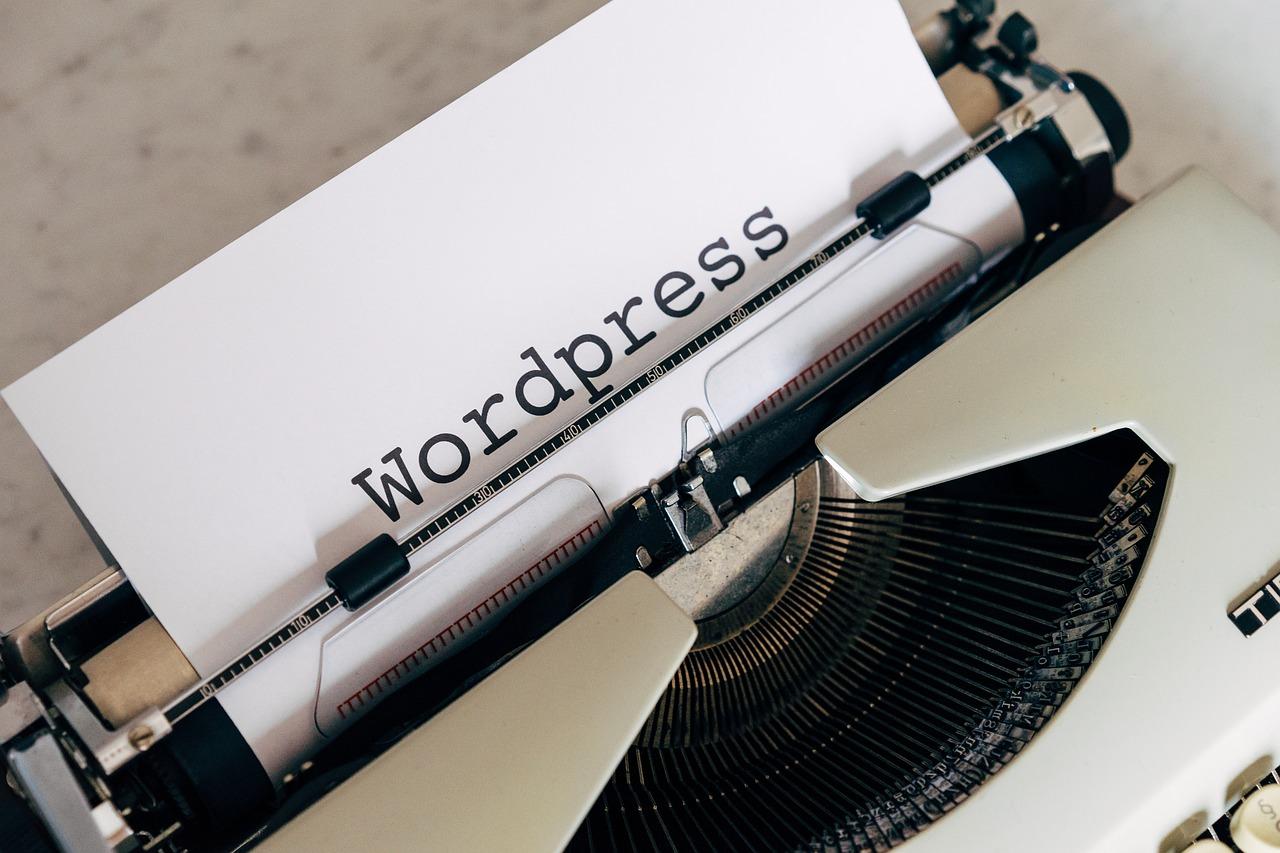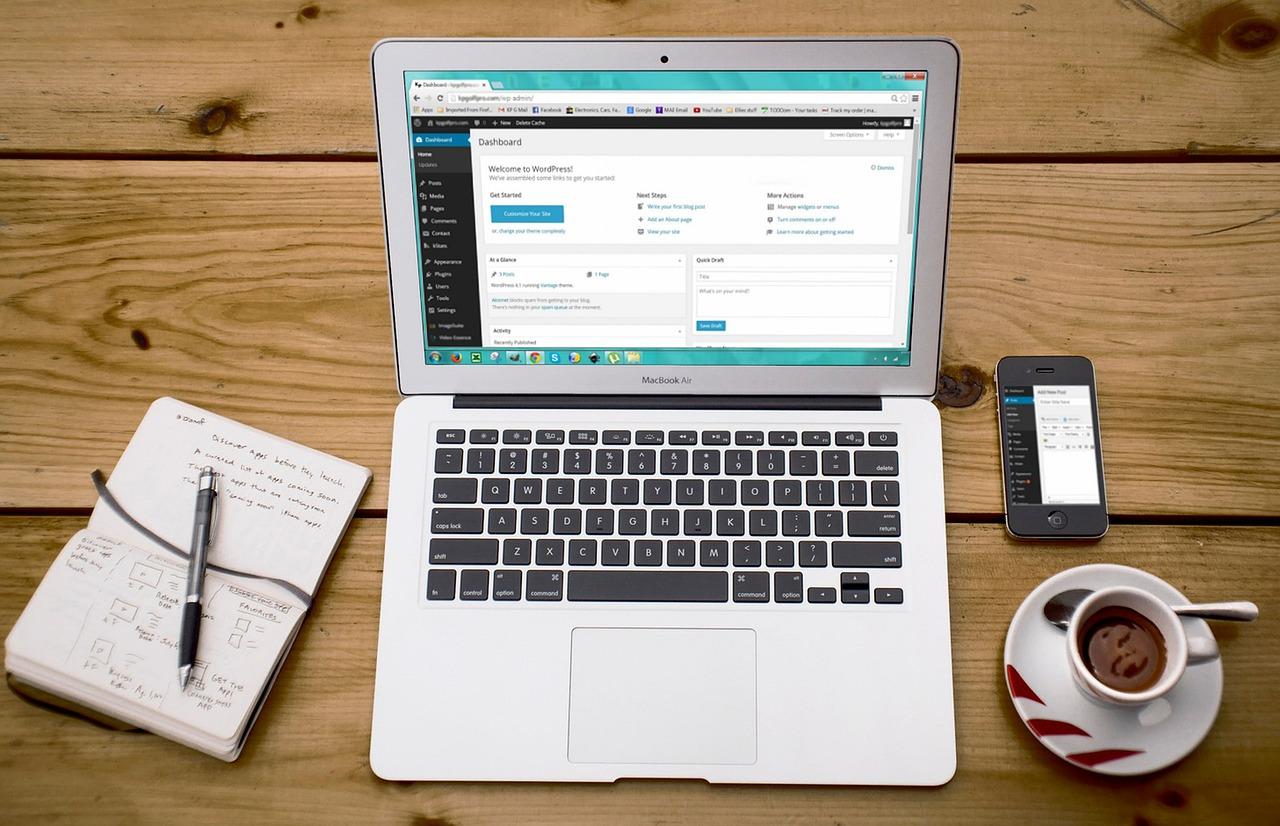Ever wondered what a podcast is and how it works? Think of it as your personal radio show—available anytime, anywhere! Join the millions tuning in for captivating stories and expert insights. Dive into our ultimate guide and discover your next favorite show!
What is a Podcast & How Does it Work? (Ultimate Guide)
What is a Podcast & How Does it Work? (Ultimate Guide)
Have you ever found yourself on a long drive, a morning run, or just lounging at home, craving something engaging and informative to listen to? Enter the world of podcasts—a vibrant, ever-evolving medium that has captured the hearts and ears of millions. But what exactly is a podcast, and how does it work? Whether you’re a curious newcomer or someone who’s heard the buzz but hasn’t quite dipped your toes in yet, this ultimate guide is here to demystify everything you need to know.
Think of podcasts as your personal radio shows, available at any time and tailored to your interests. From true crime and comedy to educational content and interviews with experts, there’s a podcast out there for everyone. And the best part? You don’t need a degree in broadcasting to enjoy or even create your own!
In this guide, we’ll break down the essentials of podcasts—what they are, how they work, and why they’ve become such a powerful storytelling medium. By the end, you’ll not only understand how to find your favorite shows but also get inspired to embark on your own podcasting journey. So, grab your headphones, and let’s dive in!
Understanding the Basics of Podcasts and Their Popularity
Podcasts have rapidly become a dominant form of media, captivating audiences around the globe. They are essentially digital audio files that can be streamed or downloaded, allowing listeners to enjoy a wide variety of topics at their convenience. The beauty of podcasts lies in their accessibility; anyone with a smartphone or computer can dive into an ocean of content, whether it’s an educational series, a gripping storytelling episode, or a light-hearted discussion.
One key reason for the surge in podcast popularity is their versatility. Here are some aspects that contribute to their appeal:
- On-Demand Listening: Unlike traditional radio, podcasts allow you to listen when and where you want, fitting seamlessly into your daily routine.
- Diverse Content: From true crime to self-improvement, the variety available means there’s something for everyone.
- Intimate Connection: The format often feels personal, as hosts typically speak directly to their audience, creating a sense of community.
- Cost-Effective: Most podcasts are free, making them an accessible option for all listeners.
In terms of how they work, the podcasting process involves several steps that bring creators’ ideas to life. First, creators brainstorm and plan their content, focusing on their target audience. Once the topic is set, the recording begins, often using professional audio equipment to enhance sound quality. After recording, the audio is edited to remove any unwanted segments, add music, or incorporate sound effects.
Next, the finalized episode is uploaded to a podcast hosting platform, which generates an RSS feed. This feed is what makes it possible for listeners to subscribe and receive new episodes automatically. Users can find and listen to podcasts through various apps or websites, such as Spotify, Apple Podcasts, or Google Podcasts.
The following table highlights some popular platforms where listeners can access podcasts:
| Platform | Notable Features |
|---|---|
| Spotify | Curated playlists, music integration |
| Apple Podcasts | Extensive library, user-friendly interface |
| Google Podcasts | Simple navigation, personalized recommendations |
| Stitcher | Exclusive content, premium subscription |
The rise of podcasts is not just a passing trend; it reflects a shift in how we consume information and entertainment. As more people turn to this format for knowledge and engagement, brands and creators are recognizing the value of tapping into this medium to reach wider audiences. No matter your interests, there’s a podcast out there waiting to be discovered, ready to inspire, entertain, or inform you in ways you might never have imagined.

How Podcasts Are Created: The Process from Idea to Production
Creating a podcast is an exciting journey that transforms a mere idea into an engaging audio experience. The process generally unfolds in several stages, allowing creators to express their thoughts and connect with their audience in unique ways.
1. Ideation: The heart of any podcast begins with a compelling idea. This is where you brainstorm topics that resonate with your interests and the audience. Consider these aspects while ideating:
- Target Audience: Who will be listening? Understanding your audience helps tailor your content.
- Format: Will it be interviews, narratives, or discussions?
- Frequency: How often will episodes be released?
2. Planning: Once you have a clear idea, it’s time to create a structured plan. This involves outlining episodes, developing scripts, and identifying potential guests. An organized approach ensures that your content flows smoothly and keeps your listeners engaged.
3. Production: The production phase is where the magic happens. Here’s what it typically includes:
- Recording: Use quality microphones and software to capture clear audio.
- Editing: Edit out mistakes and enhance sound quality using editing tools.
- Adding Music and Effects: Incorporate background music and sound effects to enrich the listening experience.
4. Publishing: After production, it’s time to share your podcast with the world. Choose a reliable hosting platform to distribute your episodes. Ensure that your podcast is available on major directories like Spotify, Apple Podcasts, and Google Podcasts to reach a wider audience.
5. Promotion: Don’t forget about marketing! Promote your podcast across social media platforms, engage with your listeners, and encourage feedback. Consider collaborating with other podcasters for cross-promotion, which can introduce your show to new audiences.
Through careful planning and execution, your podcast can grow from a simple idea to a captivating series that resonates with listeners. Each step in the process is crucial, making it essential to dedicate time and effort to refine your concept and content.
Choosing the Right Equipment for Your Podcasting Journey
Embarking on your podcasting journey requires careful consideration of the equipment that will help you create engaging and high-quality content. The right tools can elevate your podcast from a simple hobby to a professional-sounding production. To ensure that you get started on the right foot, here’s a breakdown of the essential gear you’ll need:
Microphones
Your microphone is arguably the most critical piece of equipment. It’s the device that captures your voice, so you want one that delivers clear and crisp audio. Here are some popular options:
- Dynamic Microphones: Great for reducing background noise, ideal for noisy environments.
- Condenser Microphones: Excellent for capturing a wide range of frequencies, perfect for voice clarity.
- Lavalier Microphones: Small and discreet, great for interviews and on-the-go podcasting.
Audio Interface
An audio interface acts as a bridge between your microphone and your computer. It converts the analog signal from your microphone into digital data that your computer can understand. Look for features such as:
- Multiple Inputs: If you plan on having guests, ensure it has enough inputs.
- Phantom Power: Essential for condenser microphones.
- Quality A/D Conversion: This enhances the overall sound quality.
Headphones
Investing in a good pair of headphones is essential for monitoring your audio while recording. Look for:
- Closed-Back Design: Helps isolate sound and prevent bleed into the mic.
- Comfort: Since you may wear them for long periods, comfort is key.
- Accurate Sound Representation: Ensures you hear every detail of your audio.
Recording Software
Next, you’ll need software to record and edit your podcast. Here are a few popular choices:
| Software | Best For |
|---|---|
| Audacity | Free and open-source, great for beginners. |
| Adobe Audition | Professional-grade editing with advanced features. |
| GarageBand | User-friendly for Mac users. |
Additional Accessories
Lastly, don’t forget about accessories that can enhance your podcasting setup:
- Pop Filter: Reduces plosive sounds and improves audio quality.
- Mic Stand or Boom Arm: Keeps your microphone steady and at the right height.
- Acoustic Panels: Helps minimize echo and improve sound quality in your recording space.
By carefully selecting the right equipment, you’ll set yourself up for success in your podcasting journey. Choose wisely, invest in quality gear, and your audience will appreciate the effort you put into creating exceptional content.
Editing and Producing Your Podcast: Tips for a Professional Sound
Creating a podcast is only half the journey; the magic truly happens in the editing and producing phase. This is where you can elevate your content, ensuring that your audience not only hears your message but feels it. Here are some essential tips to help you achieve a professional sound that resonates with listeners.
Invest in Good Quality Equipment
Your audio quality is paramount. While you don’t need to break the bank, essential gear can significantly impact your sound:
- Microphone: Consider investing in a USB or XLR microphone that suits your recording environment.
- Headphones: A good pair of closed-back headphones will help you catch audio inconsistencies.
- Audio Interface: If you’re using an XLR mic, an audio interface is crucial for connecting your mic to your computer.
Editing Software Matters
The right editing software can be a game-changer. Many options are available, both free and paid:
- Audacity: A free, open-source option that provides a solid feature set for beginners.
- Adobe Audition: A more advanced tool with numerous features for professionals.
- GarageBand: Ideal for Mac users, this software offers an intuitive interface and essential editing tools.
Trim the Fat
When editing, be ruthless. Listeners appreciate content that gets to the point. Here are some editing tips:
- Remove filler words: Words like “um,” “uh,” and ”like” can distract from your message.
- Cut long pauses: Silence can make your podcast feel sluggish; keep the pace engaging.
- Eliminate redundant sections: If you’ve already made a point, don’t reiterate it unnecessarily.
Add Some Polish
Once your content is tight, it’s time to add finishing touches:
- Background music: A subtle score can enhance mood and engagement but ensure it’s not overpowering.
- Sound effects: Use sparingly to punctuate key moments or transitions.
- Volume leveling: Normalize audio levels for a consistent listening experience.
Seek Feedback
Before your podcast goes live, get a second pair of ears to listen. Whether it’s friends, family, or fellow podcasters, feedback can offer invaluable insights. Consider creating a simple feedback form like the one below:
| Feedback Aspect | Rating (1-5) | Comments |
|---|---|---|
| Audio Quality | ||
| Content Engagement | ||
| Overall Flow |
Editing and producing your podcast is a craft that requires time and patience, but the results can set your show apart. With dedication and the right techniques, you can create a polished, professional podcast that not only captivates but also keeps your listeners coming back for more.
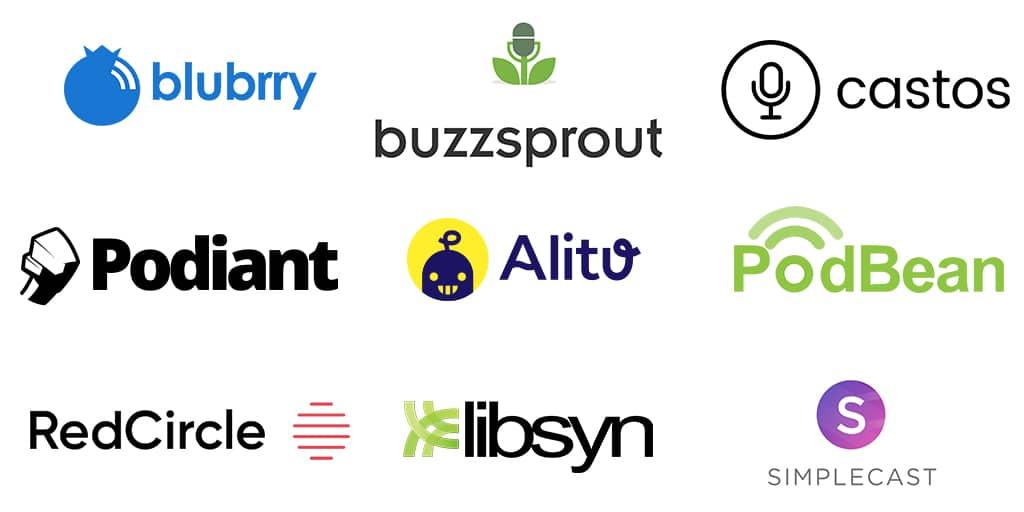
Publishing Your Podcast: Platforms and Best Practices
Once you’ve recorded your podcast, the next step is to share it with the world. Choosing the right platform to publish your podcast is crucial for reaching your audience effectively. There are several options available, each with its own unique features and benefits. Here are some of the most popular platforms:
- Spotify: Known for its vast user base, Spotify allows you to reach millions of listeners. It’s user-friendly and offers analytics to track your podcast’s performance.
- Apple Podcasts: A staple in the podcasting world, Apple Podcasts gives you access to a dedicated audience of podcast enthusiasts. Submitting your podcast here can significantly boost visibility.
- Google Podcasts: As an essential part of the Google ecosystem, this platform makes it easy for Android users to discover and listen to your podcast.
- Stitcher: Focused specifically on podcasts, Stitcher offers a unique platform for discovery and engagement, making it ideal for niche audiences.
- Podbean: A robust hosting service that provides unlimited storage and bandwidth, Podbean is great for podcasters looking for an all-in-one solution.
When it comes to publishing your podcast, following best practices can set you apart from the competition. Here are some key tips to keep in mind:
- Consistent Release Schedule: Whether you choose to publish weekly, bi-weekly, or monthly, consistency helps build an audience that knows when to expect new content.
- Quality Cover Art: Invest in eye-catching cover art that represents your podcast’s theme. This is often the first impression potential listeners will have.
- Engaging Descriptions: Write compelling show notes and episode descriptions that summarize what listeners can expect. Use keywords to enhance discoverability.
- SEO Optimization: Optimize your podcast title, episode titles, and descriptions with relevant keywords to improve searchability across various platforms.
To further enhance your podcasting strategy, consider using an effective publishing schedule. Here’s a simple table to help you plan your episodes:
| Episode Number | Title | Release Date | Notes |
|---|---|---|---|
| 1 | Introduction to Podcasting | MM/DD/YYYY | Set the stage for your podcast. |
| 2 | Interview with an Expert | MM/DD/YYYY | Engage your audience with insights. |
| 3 | Deep Dive into a Topic | MM/DD/YYYY | Explore a relevant subject matter. |
don’t underestimate the power of promotion. Share your episodes on social media, collaborate with other podcasters, and encourage your listeners to leave reviews. Engaging with your audience not only fosters a community around your podcast but also enhances your visibility across platforms.
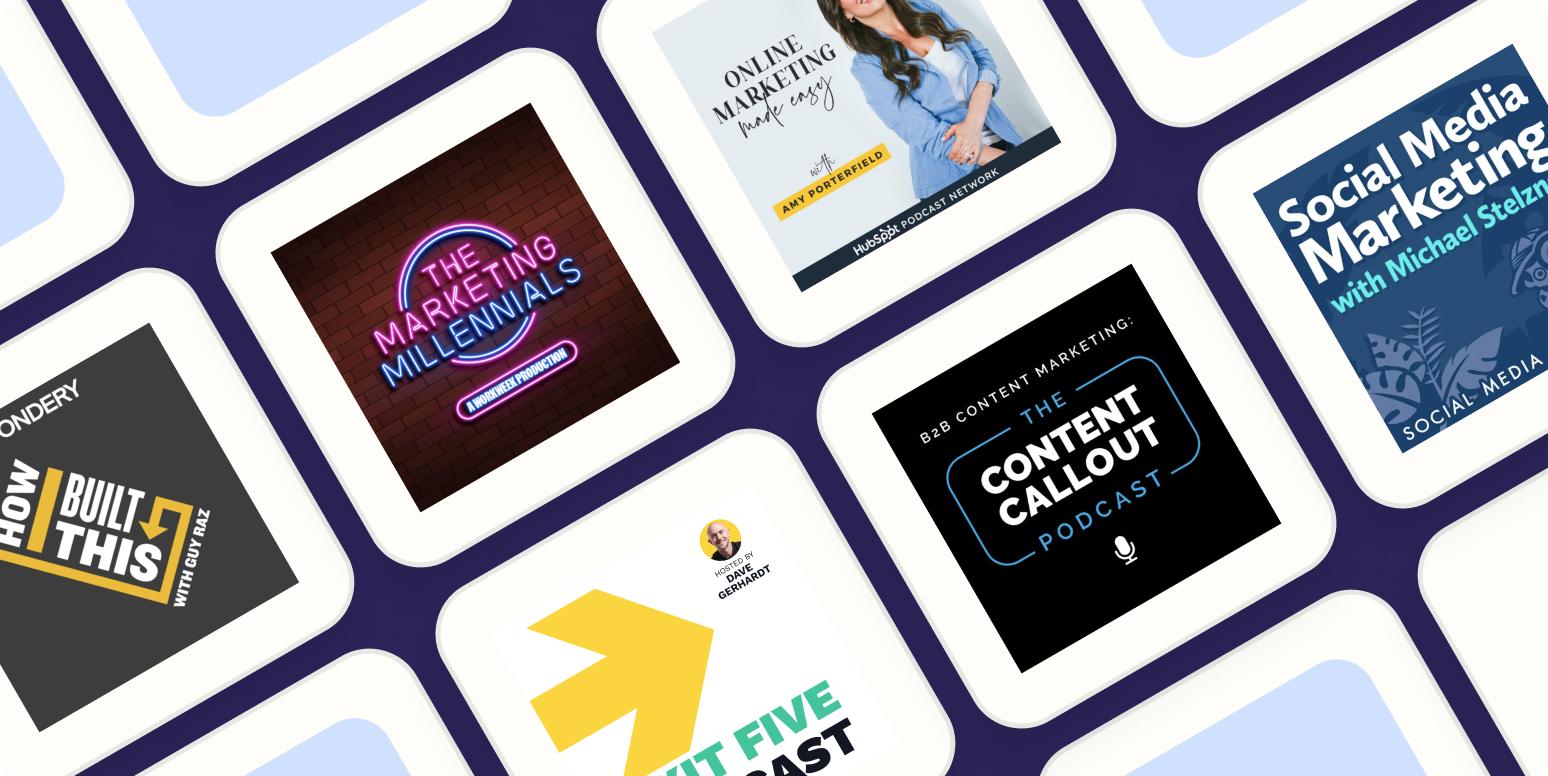
Marketing Your Podcast: Strategies to Grow Your Audience
Growing an audience for your podcast is an essential part of ensuring its long-term success. With millions of podcasts available, standing out requires savvy marketing strategies. Here are some effective tips to help you expand your listener base:
- Utilize Social Media: Leverage platforms like Instagram, Twitter, and Facebook to share snippets of your episodes, engage with listeners, and create buzz around upcoming shows. Engaging visuals and intriguing captions can draw attention and encourage shares.
- Collaborate with Other Podcasters: Reach out to hosts of complementary podcasts for guest appearances or cross-promotions. This mutually beneficial strategy exposes both audiences to new content, helping you tap into their listener base.
- Optimize Your Podcast Title and Description: Make sure your podcast title is catchy and conveys the essence of your content. A well-crafted description with relevant keywords can improve visibility in search results, making it easier for potential listeners to discover your show.
- Encourage Listener Reviews: Ask your audience to leave reviews on platforms like Apple Podcasts and Spotify. Positive reviews not only boost your credibility but also improve your podcast’s ranking, making it more likely to be featured on these platforms.
- Run Contests and Giveaways: Organizing contests can create excitement and incentivize listeners to share your podcast with their networks. Consider giving away merchandise, exclusive content, or services related to your podcast theme.
Another effective way to boost your podcast’s reach is through email marketing. Building a mailing list allows you to notify your subscribers about new episodes, share behind-the-scenes content, and foster a deeper connection with your audience. Consider the following tactics:
| Email Campaign Ideas | Purpose |
|---|---|
| Episode Announcements | Keep your audience informed about new releases. |
| Exclusive Content Access | Reward loyal listeners with bonus materials. |
| Surveys and Feedback Requests | Engage listeners and collect valuable insights. |
Lastly, consider optimizing your podcast for SEO. This involves using relevant keywords in your episode titles, descriptions, and show notes. Creating a dedicated website for your podcast can also enhance your online visibility. By implementing these strategies, you can significantly increase your chances of attracting and retaining a dedicated audience.
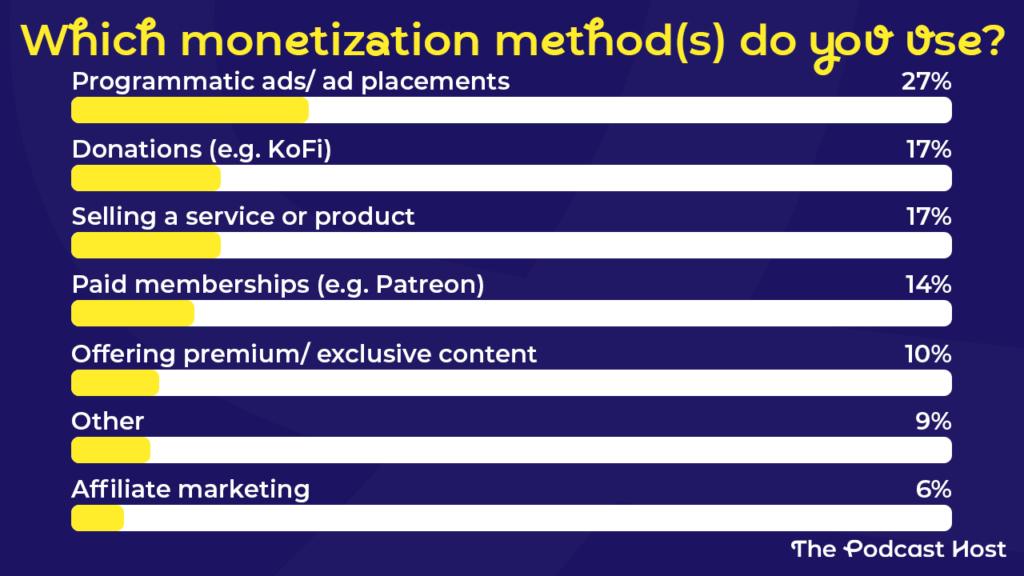
Monetizing Your Podcast: Exploring Income Opportunities
Turning your podcast into a source of income can feel daunting, but there are numerous avenues to explore. Whether you’re just starting out or have been podcasting for a while, understanding how to monetize your efforts can significantly elevate your creative journey and financial sustainability. Here are some effective methods to consider:
- Sponsorships and Advertisements: Partnering with brands can be a lucrative option. Companies often look for podcasts that align with their target audience. You can integrate sponsored messages into your episodes or even offer dedicated ad slots.
- Listener Donations: Platforms like Patreon or Buy Me a Coffee allow your audience to support you directly. Offer exclusive content, behind-the-scenes access, or personalized messages as incentives for their contributions.
- Affiliate Marketing: Promote products or services relevant to your content and earn a commission for every sale made through your referral. This method works particularly well if you have a niche audience.
- Merchandise Sales: Create and sell branded merchandise such as t-shirts, mugs, or stickers. This not only generates income but also helps promote your podcast.
To give you a clearer picture of potential income streams, here’s a simple overview:
| Income Opportunity | Description | Potential Earnings |
|---|---|---|
| Sponsorships | Brand partnerships for ads in episodes. | $20-$50 CPM* |
| Listener Donations | Direct support from fans via platforms. | $100+/month |
| Affiliate Marketing | Commission-based earnings from promoted products. | Varies widely ($5-$500 per sale) |
| Merch Sales | Revenue from selling branded items. | Depends on production costs and sales volume |
When considering these monetization strategies, it’s crucial to stay authentic to your brand and audience. Building trust is essential; your listeners should feel that any promotions or partnerships are genuine and align with your values. Experiment with different methods to find the right balance that resonates with your audience while generating income.
Lastly, keep in mind that monetization is a long-term strategy. It takes time to grow your audience and establish credibility. Focus on producing quality content and fostering a community around your podcast, and the income opportunities will follow.
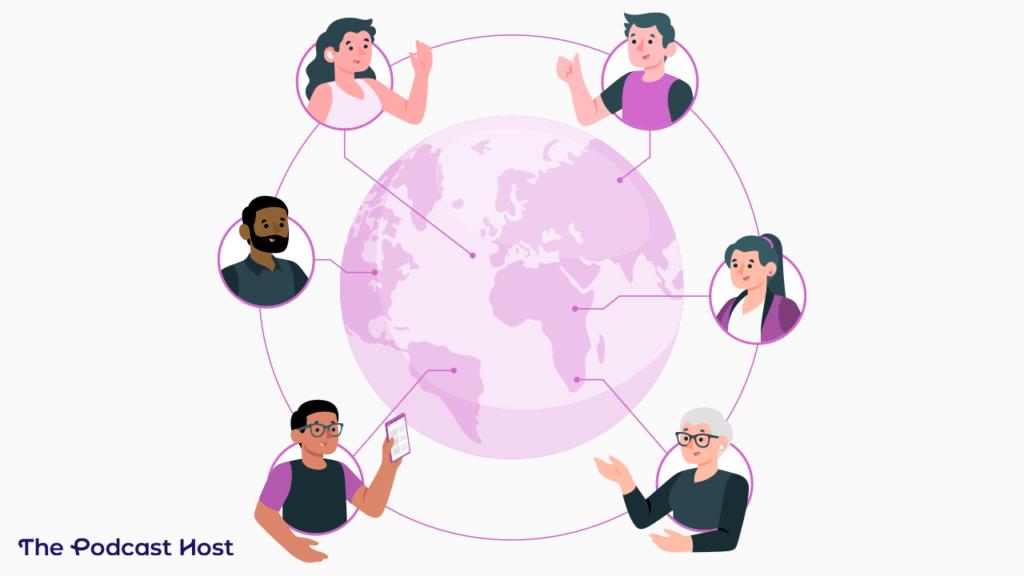
Engaging with Your Audience: Building a Community Around Your Podcast
Creating a podcast is just the beginning; the real magic lies in how you engage with your audience. Building a community around your podcast not only fosters loyalty but also enhances the overall listening experience. Here are some effective strategies to turn your audience into a thriving community:
- Leverage Social Media: Use platforms like Instagram, Twitter, and Facebook to share behind-the-scenes content, episode previews, and engage in conversations. Create dedicated pages or groups where listeners can interact with you and each other.
- Encourage Listener Feedback: Actively seek feedback through polls or questions. Encourage listeners to share their thoughts on episodes or suggest topics. This not only makes them feel valued but also gives you insight into what resonates with your audience.
- Host Live Events: Virtual meet-ups or live recordings can create a sense of belonging. Use this opportunity to interact directly with your audience, answer their questions, and discuss episodes in real-time.
- Create a Newsletter: A regular newsletter can keep your audience informed about new episodes, upcoming events, and exclusive content. This is an excellent way to nurture your community and maintain engagement outside of your podcast.
Building a community isn’t just about numbers; it’s about creating meaningful relationships. One effective way to do this is by highlighting listener stories. Consider featuring a “Listener of the Week” segment in your episodes or social media posts. This not only makes your audience feel appreciated but also encourages others to engage more deeply.
| Engagement Strategy | Benefits |
|---|---|
| Social Media Interaction | Increases reach and strengthens community ties. |
| Listener Feedback | Enhances content relevance and audience connection. |
| Live Events | Fosters real-time engagement and relationship-building. |
| Exclusive Content | Incentivizes loyalty and creates a sense of exclusivity. |
Don’t forget to maintain a consistent presence and voice across all platforms. Your audience should recognize your personality and values, fostering trust and loyalty. As your community grows, you’ll find that they can be your best advocates, sharing your podcast with their networks and becoming invested in your journey.
Ultimately, engaging with your audience is about authenticity and connection. Be genuine in your interactions, and you’ll cultivate a passionate community that not only loves your podcast but also contributes to its evolution. By prioritizing engagement, you’re not just creating listeners—you’re building a family.
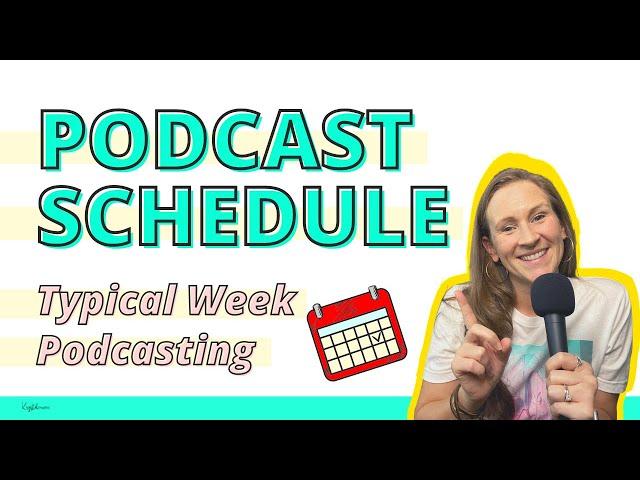
Staying Consistent: Developing a Podcasting Schedule That Works
Creating a podcasting schedule is crucial for maintaining consistency and building an audience. A well-structured plan ensures that you not only produce content regularly but also allow for adequate preparation and promotion. Here are some essential steps to consider while developing your podcasting schedule:
- Determine Your Frequency: Decide how often you want to release episodes. Common schedules include weekly, bi-weekly, or monthly. Consider your availability and the time you need for research, recording, and editing.
- Set a Recording Day: Choose a specific day of the week dedicated to recording your episodes. This way, it becomes a part of your routine, reducing the chances of procrastination.
- Plan Ahead: Create a content calendar that outlines your topics, guests, and release dates for several months ahead. This not only helps in organizing your thoughts but also ensures that you have a steady flow of content.
- Batch Production: Consider recording multiple episodes in one sitting. This method can save time and help you stay ahead of your schedule, particularly during busy weeks.
It’s also important to leave room for flexibility in your schedule. Life can be unpredictable, and sometimes you may need to adjust your plans. Here are a few tips on how to maintain flexibility:
- Buffer Time: Give yourself extra time between episodes for unforeseen circumstances, such as technical difficulties or personal commitments.
- Guest Scheduling: When planning interviews, always have a few backup guests in mind in case your first choice falls through.
- Adjust Release Dates: If you find that a particular week is overwhelming, don’t hesitate to push your release date. Your audience will appreciate the quality over quantity.
Lastly, it’s critical to communicate your schedule with your audience. Let them know when to expect new episodes and keep them engaged. You can use your social media platforms or your podcast’s website to share updates. Here’s a simple table layout for your audience:
| Week | Release Date | Episode Title |
|---|---|---|
| 1 | Monday | Understanding Podcast Formats |
| 2 | Monday | Top Tips for Podcast Editing |
| 3 | Monday | Interview with a Podcasting Pro |
| 4 | Monday | How to Market Your Podcast |
By following these strategies, you’ll find that developing and sticking to a podcasting schedule becomes much easier. Remember, consistency breeds trust, and your audience will come to rely on your content as part of their regular routine. The path to successful podcasting is paved with commitment and planning, so start mapping out your schedule today!
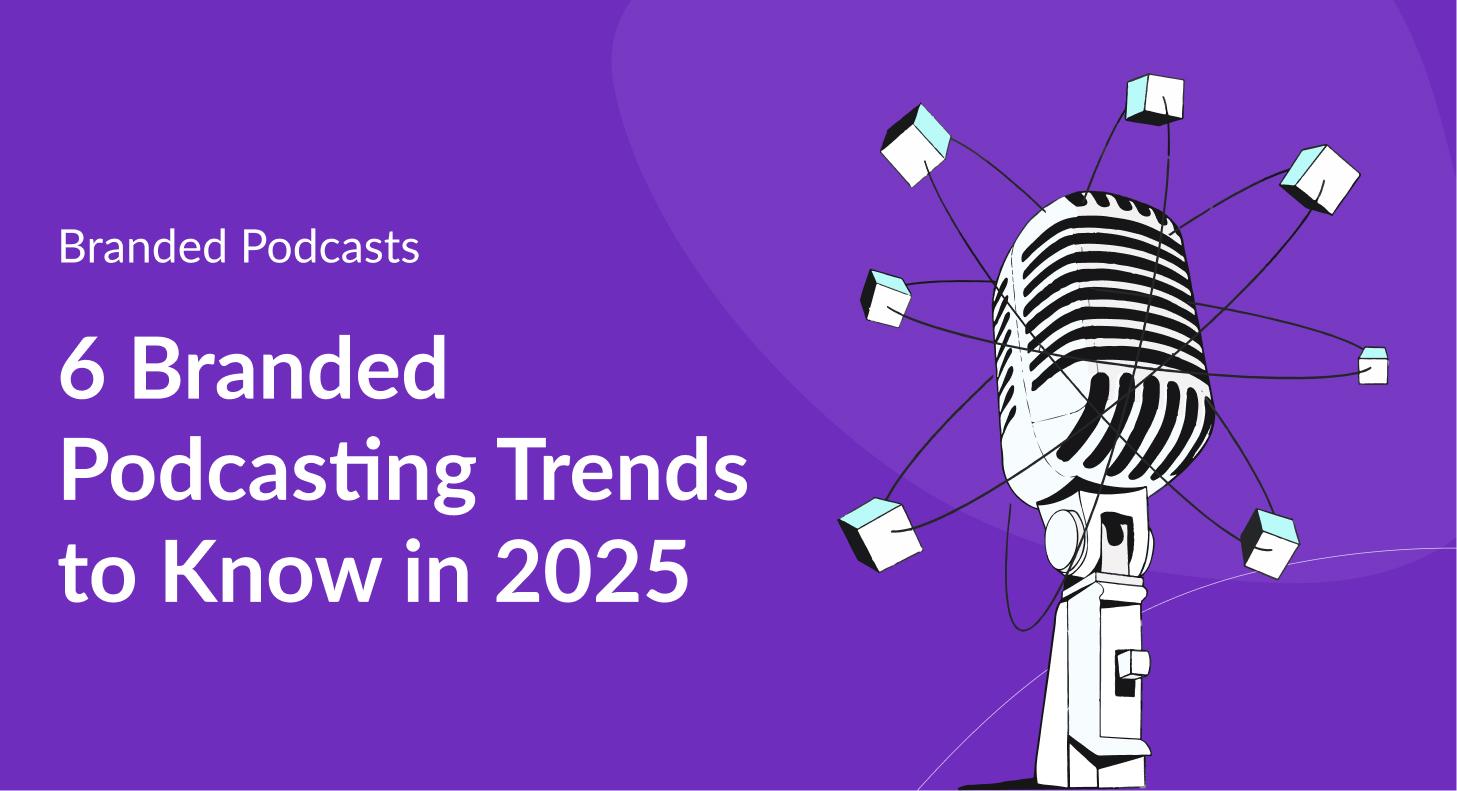
Future Trends in Podcasting: What to Expect and How to Adapt
The podcasting landscape is evolving at a rapid pace, and staying ahead of the curve is crucial for content creators. As technology advances and audience preferences shift, several trends are shaping the future of podcasting. Here’s what you can anticipate and how to effectively adapt to these changes.
- Personalization: Listeners are increasingly looking for content that resonates with their personal interests. This trend emphasizes the need for podcasters to tailor their content to niche markets, making it essential to understand your audience’s specific needs and preferences.
- Increased Interactivity: The future of podcasting isn’t just about passive listening. Interactive elements such as live Q&A sessions, polls, and audience feedback are becoming commonplace. Engaging with listeners in real-time fosters a sense of community and can significantly enhance listener loyalty.
- Enhanced Audio Quality: As competition grows, so does the expectation for high production values. Investing in better equipment and editing software will not only improve audio quality but also elevate the overall listening experience.
- Integration with Social Media: The synergy between podcasts and social media platforms is becoming more pronounced. Creators are encouraged to leverage these platforms to promote their episodes, engage with listeners, and share behind-the-scenes content. This cross-promotion can drive traffic and grow your audience.
- AI and Automation: The rise of AI tools for content generation and editing will transform the way podcasting is approached. From automatic transcription services to AI-driven analytics, embracing these technologies can streamline production and provide valuable insights into listener behavior.
To keep up with these trends, podcasters need to be proactive. Here are a few strategies to consider:
| Strategy | Description |
|---|---|
| Invest in Audience Research | Use surveys and analytics tools to gain insights into listener preferences. |
| Utilize Collaboration | Partner with other podcasters or brands to expand reach and diversify content. |
| Leverage Data Analytics | Analyze podcast metrics to refine content and improve engagement. |
| Experiment with Formats | Try new styles, such as storytelling, interviews, or roundtable discussions. |
As the podcasting industry continues to evolve, being adaptable and innovative will set successful creators apart. By embracing these trends and actively adjusting your approach, you can not only enhance your podcast but also ensure its relevance in a constantly changing media landscape.
Frequently Asked Questions (FAQ)
Q&A: What is a Podcast & How Does it Work? (Ultimate Guide)
Q1: What exactly is a podcast?
A: Great question! A podcast is essentially a digital audio program that you can listen to anytime, anywhere. Think of it like a radio show, but on-demand. Each episode can cover a wide range of topics, from true crime to self-help to comedy, making it a fantastic medium for storytelling, education, and entertainment.
Q2: How does a podcast work?
A: Podcasts work through a series of steps. First, creators record their audio content, which is then edited and prepared for distribution. Once they’re happy with the final product, the episodes are uploaded to a podcast hosting platform. From there, they generate an RSS feed, which allows listeners to access episodes through various podcast apps or websites. It’s as simple as that!
Q3: Why should I listen to podcasts?
A: Oh, where do I begin? For starters, podcasts are incredibly versatile. You can enjoy them while commuting, exercising, cooking, or even just relaxing at home. They’re also a treasure trove of information—offering expert insights and stories that you might not find elsewhere. Plus, there’s a podcast out there for everyone, no matter your interests!
Q4: Do I need special equipment to listen to a podcast?
A: Not at all! You just need a device that can connect to the internet—like a smartphone, tablet, or computer. Most podcast apps are free and easy to use. Just download one, search for your favorite shows, and start listening. It’s that straightforward!
Q5: What if I want to create my own podcast?
A: That’s awesome! Starting your own podcast can be incredibly rewarding. You’ll need a few basics: a good microphone, recording software, and a clear idea of your content. After that, it’s all about planning, recording, editing, and putting it out into the world. There are tons of resources and communities available to help you every step of the way!
Q6: How can I find podcasts that I’ll love?
A: You’re in luck! Most podcast apps have categories and recommendations based on your interests. You can also check out ratings and reviews to see what’s popular. Don’t hesitate to explore—you might stumble upon a hidden gem that becomes your new favorite!
Q7: How often do new podcast episodes come out?
A: It really depends on the creator! Some podcasts release episodes weekly, while others might have a monthly schedule or drop multiple episodes at once. Many creators will let you know their schedule, so you can look forward to new content.
Q8: What’s the future of podcasts?
A: The future of podcasts looks incredibly bright! With technology evolving and the demand for audio content on the rise, we can expect an expansion in formats, topics, and even interactive experiences. It’s a thriving space that continues to grow, and as a listener or creator, you’ll be part of an exciting journey!
Q9: Can I support my favorite podcasters?
A: Absolutely! Many podcasters rely on their listeners for support. You can help by subscribing to their shows, sharing episodes with friends, leaving positive reviews, or even contributing through platforms like Patreon. Your support helps them continue creating the content you love!
Q10: Where can I learn more about starting a podcast?
A: There are plenty of fantastic resources out there! You can find guides, online courses, and even podcasts about podcasting. Communities on social media platforms and forums dedicated to podcasting are great places to connect with other creators as well. Dive in, and you’ll be a podcast pro in no time!
—
Ready to embrace the podcasting world? Whether you’re a listener or an aspiring creator, there’s so much to explore and enjoy! Happy listening!
In Retrospect
Wrapping Up: Dive into the World of Podcasts!
And there you have it! You’re now equipped with all the essentials on what a podcast is and how it works. Whether you’re looking to start your own show or simply want to explore the vast ocean of existing podcasts, the possibilities are endless. With millions of topics covering everything from true crime to personal development, there’s truly something for everyone.
So why not dive in? Grab your headphones, find a topic that piques your interest, and immerse yourself in the captivating world of podcasts. And if you’re feeling inspired, don’t hesitate to share your voice with the world! Start that podcast you’ve been dreaming about—it might just be the next big hit!
Remember, the beauty of podcasts lies in their accessibility and diversity. They’re more than just audio content; they’re a gateway to new ideas, perspectives, and connections. So go ahead, hit play, and let the journey begin. Who knows what you might discover along the way? Happy listening!



